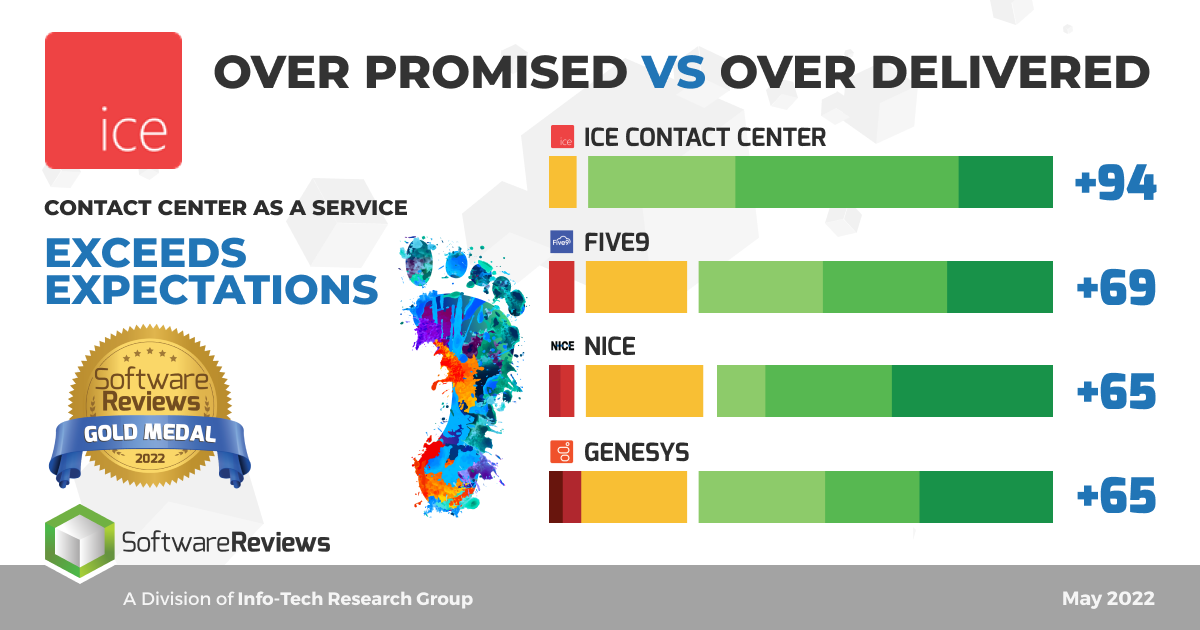8 Ways to Improve Government Service Delivery in 2025
by Erina Suzuki | Published On September 29, 2022 | Last Updated May 16, 2025

Modern government agencies are under growing pressure to serve citizens quickly, securely, and efficiently—especially as expectations rise for 24/7 support and digital-first services. Traditional in-person models no longer meet these demands. Fortunately, contact center technology provides a scalable, flexible solution.
Whether it's streamlining workflows, enabling self-service, or empowering remote agents, contact center platforms like ice Contact Center are helping governments modernize their service delivery and improve citizen experiences across all departments.
To help you navigate this transformation, we’ve outlined several actionable strategies for 2025—each designed to tackle a specific service delivery challenge using modern contact center technology.
- Key Benefits of Contact Center Technology
- 8 Strategic Ways to Modernize Service Delivery
- Real-World Examples from Government Agencies
Key Benefits of Contact Center Technology for Government
Before diving into specific examples, here are some key benefits public service providers gain from modern contact center platforms:
- Faster response times through automation and intelligent routing
- Improved citizen satisfaction with personalized, omnichannel support
- Greater operational efficiency by streamlining routine inquiries
- Enhanced data security and compliance, including PCI and PIPEDA
- Scalable, remote-ready infrastructure for business continuity

8 Strategic Ways Governments Can Modernize Service Delivery in 2025
1. Prioritize Omnichannel Citizen Engagement
Delivering services across multiple communication channels is no longer optional—it’s expected. In 2025, governments must adopt true omnichannel capabilities, ensuring citizens can connect via voice, SMS, email, chat, and social media with a consistent experience.
By implementing a unified interface that consolidates all conversations and interaction history into a single view, agents can see what the citizen has already shared—regardless of the channel. This means citizens don’t have to repeat themselves when transferred or when switching channels, which significantly reduces unnecessary handoffs between departments or agents. The result? Fewer call transfers, improved accessibility, and a smoother overall service experience.
2. Implement AI-Powered Self-Service
AI chatbots and intelligent IVRs are now critical components of effective service delivery. These tools allow residents to resolve routine requests like application status updates or appointment bookings without needing to speak to an agent. Public service departments can reduce wait times and increase first-contact resolution by implementing AI-driven self-service across all digital channels.
3. Use Data Analytics to Drive Decisions
Contact center platforms are a goldmine for citizen feedback and operational data. By using built-in reporting and analytics tools, government agencies can identify service gaps, monitor performance in real time, and proactively adjust staffing or communication strategies. Data-driven insights will be central to delivering faster and more equitable service.
4. Empower Remote and Hybrid Government Teams
With many public sector organizations embracing hybrid work, a cloud-based contact center ensures agents can deliver consistent service regardless of location. A cloud-based contact center platform provides secure access to all necessary tools and communication logs. Set up role-based access permissions and enforce secure login protocols like multi-factor authentication. With a distributed workforce, governments can offer more responsive support during emergencies and expand hiring pools beyond metro areas.
5. Enhance Personalization Through CRM Integration
Government interactions often involve multi-step, ongoing processes. Connect your contact center platform to a CRM system so agents can view a citizen’s full history—previous requests, submitted forms, and case notes. Use this data to offer more empathetic, informed support and minimize the need for citizens to repeat themselves. Personalization builds trust and enables faster resolutions, which in turn boosts public perception of government service quality.
6. Strengthen Security and Build Trust
As digital services grow, so does the importance of secure data handling. Governments must meet high standards for data protection and privacy to safeguard against risks like data breaches, identity theft, and unauthorized access to sensitive information. By using PCI-compliant solutions for phone payments and encrypted communication channels, platforms like ice Contact Center help agencies mitigate these risks and maintain public trust in 2025.
7. Incorporate Sentiment and Speech Analytics
Go beyond basic metrics to understand how citizens feel about their interactions. Use AI-powered sentiment analysis to flag negative calls or identify moments of frustration. Combine these insights with quality assurance reviews to coach agents, improve scripts, and optimize IVR paths. By listening at scale, governments can uncover service gaps and address them before they escalate into public dissatisfaction.
8. Adopt Proactive Service and Notifications
Leverage your contact center to push out timely alerts and updates. From appointment reminders to deadline notifications or emergency instructions, proactive communication reduces inquiry volumes and enhances trust. Use integrations with government databases to segment audiences and tailor messaging based on location, service usage, or demographic data. Implement opt-in features so citizens can choose their preferred channels for receiving alerts.

Real-World Examples: How Governments Use ice Contact Center
ice Contact Center is a cloud-based omnichannel solution built to handle the diverse needs of public sector organizations. Our highly configurable platform integrates with your existing tools, enables automation, ensures compliance, and supports communication across voice, chat, email, and SMS. Whether you're a municipal agency or a federal department, ice Contact Center can be tailored to your workflows and scaled to your staffing needs.
In the examples below, you’ll see how different government agencies have successfully implemented ice Contact Center to modernize service delivery, increase operational efficiency, and improve citizen satisfaction.
Use Case #1: Gaining Real-Time Visibility with AI-Driven Reporting
A provincial department responsible for income assistance and child protection services struggled with a legacy contact center system that lacked visibility into agent performance and case volumes. This resulted in delayed decision-making, inconsistent staffing, and service-level breaches.
By implementing ice Contact Center including a workforce management integration, the department gained real-time insights and AI-powered forecasting. Supervisors could now proactively adjust staffing and monitor service delivery across teams—helping them meet service standards and improve overall response times.
Use case #2: 40% Reduction in Operator-Assisted Calls
A child support hotline experienced high call volumes and frequent busy signals due to a dated DTMF menu system. Long wait times and limited menu options left citizens frustrated, while agents were tied up with repetitive inquiries.
Using ice Contact Center’s speech-enabled IVR, they transitioned to a faster, voice-driven interface that allows users to speak their account number and PIN for instant updates. This self-service capability reduced the need for agent intervention, decreasing operator-assisted calls by 40%.
Use case #3: Unifying 1,800 Agents Across Multiple Ministries with Omnichannel Support
A provincial government overseeing multiple ministries needed a centralized solution to manage diverse service needs across departments—ranging from transportation to social services. However, each ministry operated in isolation, making collaboration and cross-department service delivery difficult.
ice Contact Center’s flexibility allowed each ministry to customize configurations while still operating within a single, unified platform. The solution supports voice-only and multimedia teams, as well as those requiring PCI-compliant payment features. With approximately 1,800 agents onboarded, the province now delivers more consistent and reliable service across all divisions.
Use case #4: Ensuring Compliance with Call Recording
A newly formed government agency responsible for managing citizen records had no formal contact center system in place. They needed a solution that could ensure regulatory compliance, secure information handling, and proper training as they scaled operations.
With no previous contact center in place, they implemented ice Contact Center to establish operations. The built-in call recording feature enabled supervisors to monitor interactions for training and regulatory compliance, while also offering a secure environment for handling sensitive information.
Lead the Way in 2025 with Modern Contact Center Technology
Public service providers are expected to deliver more with fewer resources. Contact center platforms like ice Contact Center empower governments to meet these expectations with modern tools like AI, real-time analytics, omnichannel support, and secure cloud infrastructure. 👉 Learn how ice Contact Center supports government and public services at computer-talk.com/government
More from our blog
 Looking to enhance customer interactions and boost satisfaction? Discover best practices for contact centers using customer engagement solutions.
Looking to enhance customer interactions and boost satisfaction? Discover best practices for contact centers using customer engagement solutions.
 I’ve had the privilege of growing my career as a lead engineer while helping guide ComputerTalk through one of the most transformative eras in our history.
I’ve had the privilege of growing my career as a lead engineer while helping guide ComputerTalk through one of the most transformative eras in our history.
 ComputerTalk is excited to announce that we’re scored a leader in exceeding client expectations in InfoTech Research Group’s SoftwareReviews.
ComputerTalk is excited to announce that we’re scored a leader in exceeding client expectations in InfoTech Research Group’s SoftwareReviews.

